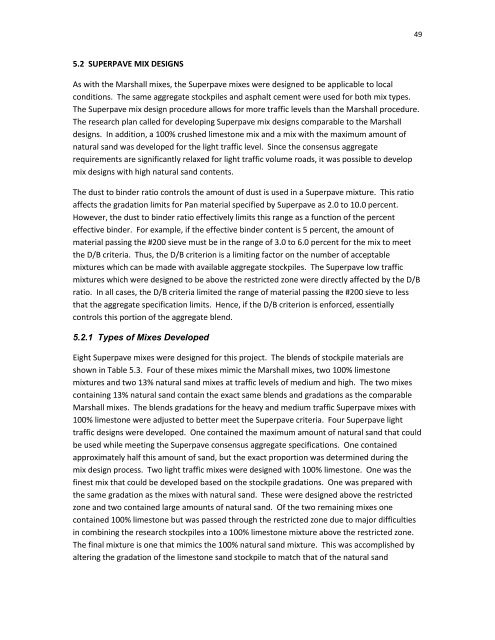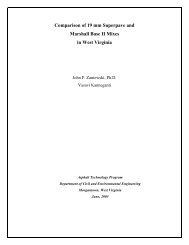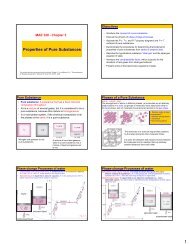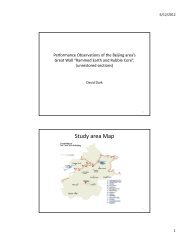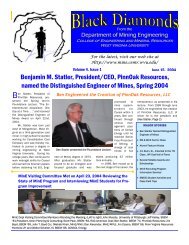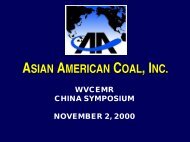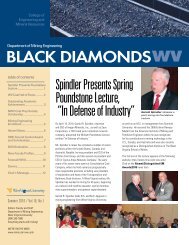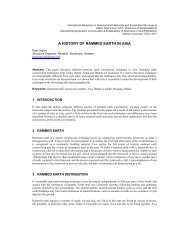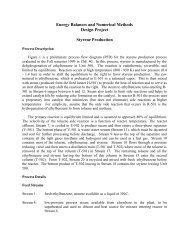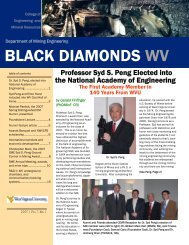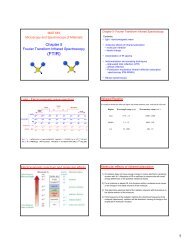Comparison of 9.5 mm SuperPave and Marshall Wearing I Mixes in ...
Comparison of 9.5 mm SuperPave and Marshall Wearing I Mixes in ...
Comparison of 9.5 mm SuperPave and Marshall Wearing I Mixes in ...
You also want an ePaper? Increase the reach of your titles
YUMPU automatically turns print PDFs into web optimized ePapers that Google loves.
495.2 SUPERPAVE MIX DESIGNSAs with the <strong>Marshall</strong> mixes, the Superpave mixes were designed to be applicable to localconditions. The same aggregate stockpiles <strong>and</strong> asphalt cement were used for both mix types.The Superpave mix design procedure allows for more traffic levels than the <strong>Marshall</strong> procedure.The research plan called for develop<strong>in</strong>g Superpave mix designs comparable to the <strong>Marshall</strong>designs. In addition, a 100% crushed limestone mix <strong>and</strong> a mix with the maximum amount <strong>of</strong>natural s<strong>and</strong> was developed for the light traffic level. S<strong>in</strong>ce the consensus aggregaterequirements are significantly relaxed for light traffic volume roads, it was possible to developmix designs with high natural s<strong>and</strong> contents.The dust to b<strong>in</strong>der ratio controls the amount <strong>of</strong> dust is used <strong>in</strong> a Superpave mixture. This ratioaffects the gradation limits for Pan material specified by Superpave as 2.0 to 10.0 percent.However, the dust to b<strong>in</strong>der ratio effectively limits this range as a function <strong>of</strong> the percenteffective b<strong>in</strong>der. For example, if the effective b<strong>in</strong>der content is 5 percent, the amount <strong>of</strong>material pass<strong>in</strong>g the #200 sieve must be <strong>in</strong> the range <strong>of</strong> 3.0 to 6.0 percent for the mix to meetthe D/B criteria. Thus, the D/B criterion is a limit<strong>in</strong>g factor on the number <strong>of</strong> acceptablemixtures which can be made with available aggregate stockpiles. The Superpave low trafficmixtures which were designed to be above the restricted zone were directly affected by the D/Bratio. In all cases, the D/B criteria limited the range <strong>of</strong> material pass<strong>in</strong>g the #200 sieve to lessthat the aggregate specification limits. Hence, if the D/B criterion is enforced, essentiallycontrols this portion <strong>of</strong> the aggregate blend.5.2.1 Types <strong>of</strong> <strong>Mixes</strong> DevelopedEight Superpave mixes were designed for this project. The blends <strong>of</strong> stockpile materials areshown <strong>in</strong> Table 5.3. Four <strong>of</strong> these mixes mimic the <strong>Marshall</strong> mixes, two 100% limestonemixtures <strong>and</strong> two 13% natural s<strong>and</strong> mixes at traffic levels <strong>of</strong> medium <strong>and</strong> high. The two mixesconta<strong>in</strong><strong>in</strong>g 13% natural s<strong>and</strong> conta<strong>in</strong> the exact same blends <strong>and</strong> gradations as the comparable<strong>Marshall</strong> mixes. The blends gradations for the heavy <strong>and</strong> medium traffic Superpave mixes with100% limestone were adjusted to better meet the Superpave criteria. Four Superpave lighttraffic designs were developed. One conta<strong>in</strong>ed the maximum amount <strong>of</strong> natural s<strong>and</strong> that couldbe used while meet<strong>in</strong>g the Superpave consensus aggregate specifications. One conta<strong>in</strong>edapproximately half this amount <strong>of</strong> s<strong>and</strong>, but the exact proportion was determ<strong>in</strong>ed dur<strong>in</strong>g themix design process. Two light traffic mixes were designed with 100% limestone. One was thef<strong>in</strong>est mix that could be developed based on the stockpile gradations. One was prepared withthe same gradation as the mixes with natural s<strong>and</strong>. These were designed above the restrictedzone <strong>and</strong> two conta<strong>in</strong>ed large amounts <strong>of</strong> natural s<strong>and</strong>. Of the two rema<strong>in</strong><strong>in</strong>g mixes oneconta<strong>in</strong>ed 100% limestone but was passed through the restricted zone due to major difficulties<strong>in</strong> comb<strong>in</strong><strong>in</strong>g the research stockpiles <strong>in</strong>to a 100% limestone mixture above the restricted zone.The f<strong>in</strong>al mixture is one that mimics the 100% natural s<strong>and</strong> mixture. This was accomplished byalter<strong>in</strong>g the gradation <strong>of</strong> the limestone s<strong>and</strong> stockpile to match that <strong>of</strong> the natural s<strong>and</strong>


